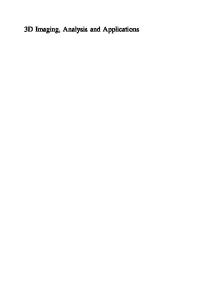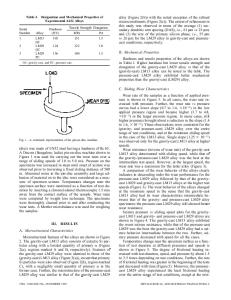Nanoantibiotic Particles for Shape and Size Recognition of Pathogens
- PDF / 354,015 Bytes
- 6 Pages / 432 x 648 pts Page_size
- 4 Downloads / 316 Views
Nanoantibiotic Particles for Shape and Size Recognition of Pathogens Josef Borovicka1, Simeon D. Stoyanov2 and Vesselin N. Paunov*,1 1 Department of Chemistry, University of Hull, Hull, HU6 7RX, UK 2 Unilever R&D, Olivier van Noortlaan 120, 3133 AT Vlaardingen, the Netherlands. ABSTRACT We have developed a novel class of colloidal particles capable of shape and size recognition as well as specific binding to the target cells. These colloid particles were fabricated using a nanoimprinting technology which yields inorganic imprints of the chosen target microorganisms. The products of the templating process are partially fragmented inorganic shells which can selectively bind to their biological counterparts, therefore impairing microbial cell growth, replication and infection. We have named this class of particles, which are capable of selectively recognizing bacterial shape and size, “nanoantibiotics”, which can be further functionalized to kill the target cells. The selective binding is driven by the increased area of contact upon recognition of the cell shape and size between the cells and their matching inorganic shell fragments. Here, we demonstrate the cell recognition and binding action of such particles using two different microbial test organisms.
INTRODUCTION The emergence of bacterial strains resistant event to vancomycin questions our ability to create a universal and lasting defense against novel strains of antibiotic-resistant bacteria[1]. New strategies are needed to confront these growing threats which involve unconventional approaches for containing such microorganisms that use different principle of antibiotic action[2]. One new approach involves nanoparticle formulations with engineered biocidal effect designed to target specific bacteria[3-6]. In another approach Dickert and Hayden[7] used shape recognition of yeast cells by patterned solid surfaces imprinting the surfaces of three different type of yeast, which allowed selective cell binding and distinguishing between them. Similar approached for shape selective binding of microbes and spores on imprinted surfaces and hydrogel beads was employed by Cohen et al.[8] and Harvey et al. [9]. In this paper we have fabricated a new class of the nanoantibiotic colloid particles using a common process of producing silica shells on target cells via the Ströber process of base catalyzed hydrolysis of tetraethoxysilane[10]. Yeast cells were used as model target cells for this templating process. The silica shell deposition was followed by the shell fragmentation using ultrasonic agitation and subsequent bleaching of the yeast cells. After suitable surface treatment, the obtained shell fragments were used to test their binding selectivity in a dispersion of the yeast cells and in a mixture of the same yeast cells and rod-shaped bacterial cells (B. subtilis). This methodology is the first step of the fabrication of cell shape-recognizing colloid particles which can be further loaded with highly concentrated biocide that can be delivered directly onto the *
Cor
Data Loading...











